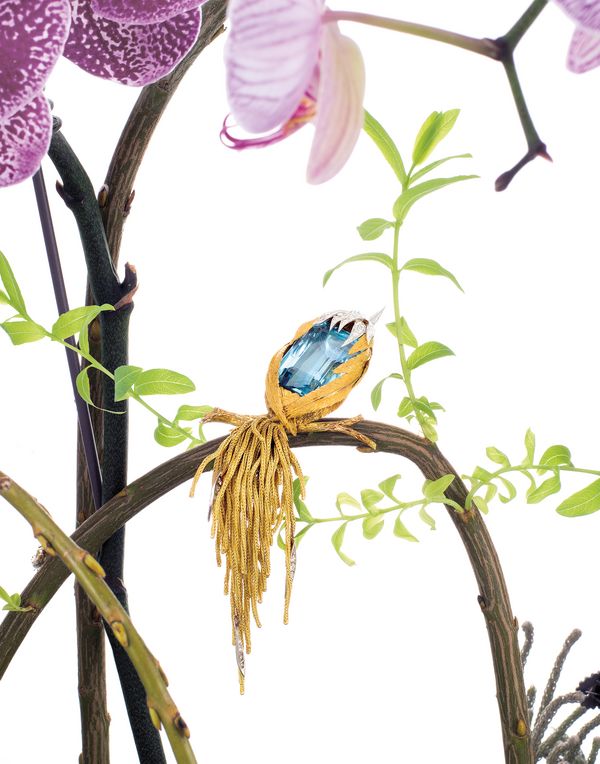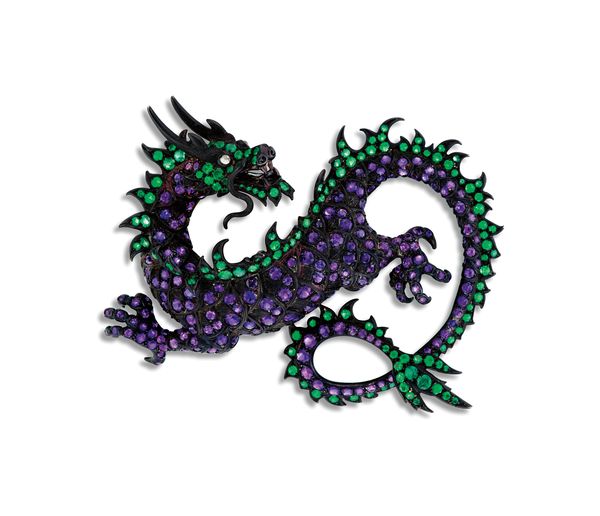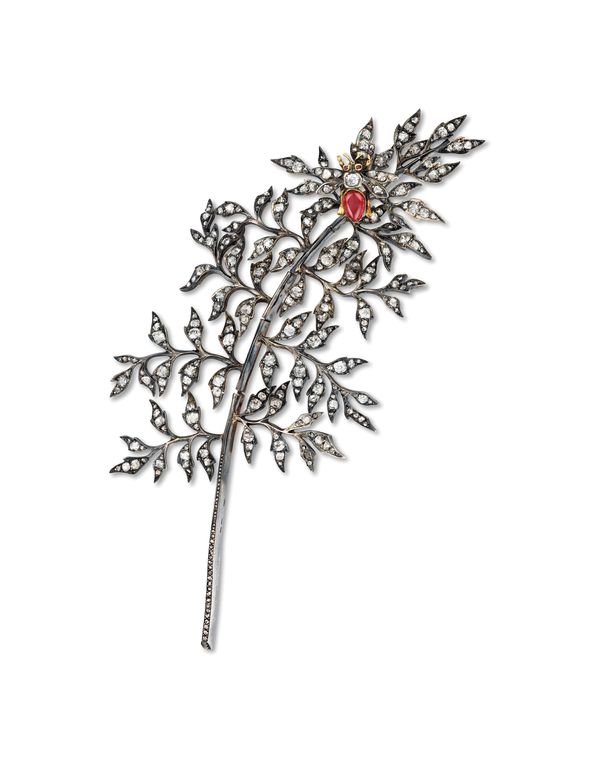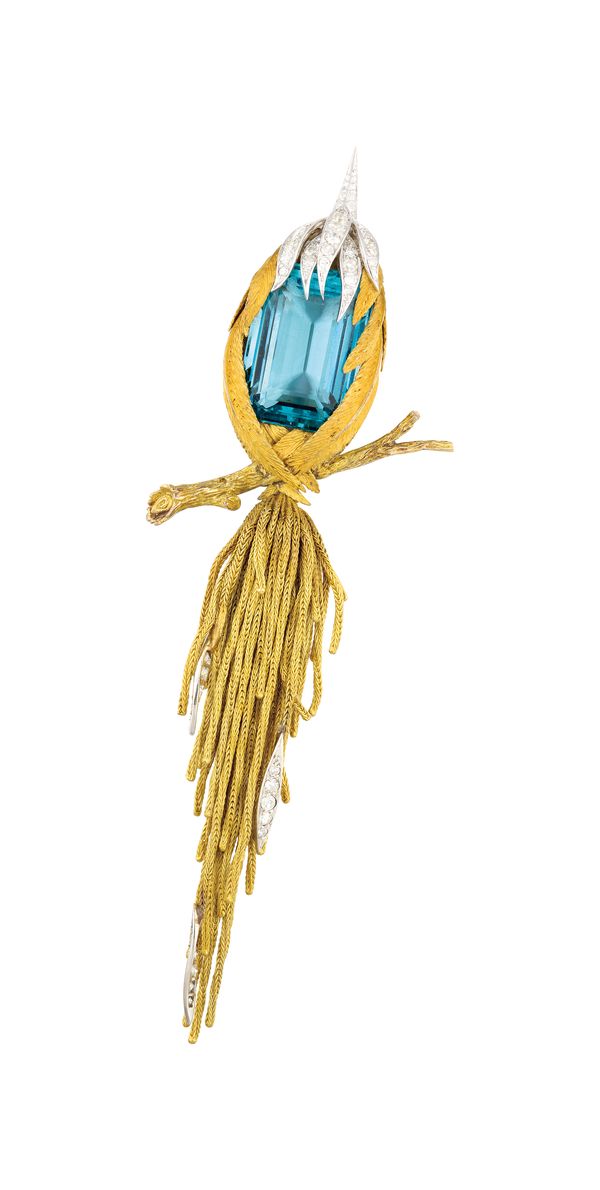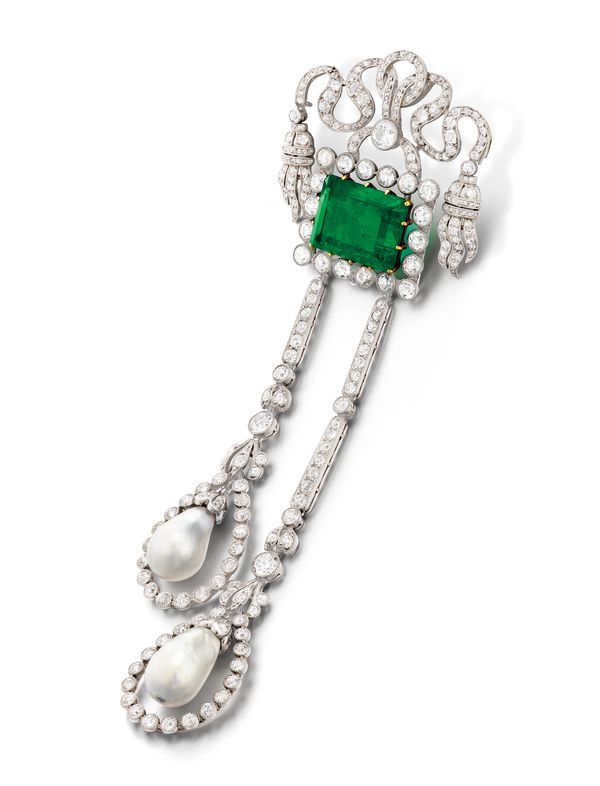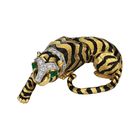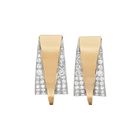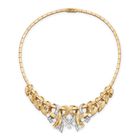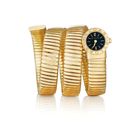Brooches were first invented in the early Bronze Age when our ancestors were clothed and needed a fastener to hold fabric together — these were known as fibulae, likened to a bow-shaped safety pin. The invention of buttons in the thirteenth century, alongside general changes in attire, lessened the necessity for the brooch as a fastener and led to the development of brooches as a form of ornament in the centuries to come.

Duke and Duchess of Windsor, circa 1938
Throughout history, brooches have been considered indispensable in the jewelry box of the rich and famous: many of these legendary figures are of royal and noble descent, including leading fashion icons Duchess of Windsor and Coco Chanel; others, including Queen Elizabeth II and Peng Li Yuan, are important names in the political field.
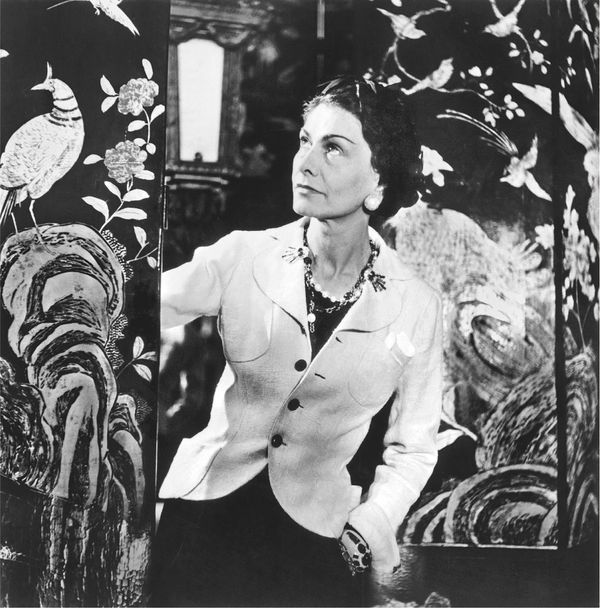
Gabrielle 'Coco' Chanel (1883-1971) in her suite at the Ritz Hotel in Paris, circa 1937
In modern times, the brooch is arguably the most working women-friendly form of jewelry. While achieving beautiful ornamentation, they are no more difficult to wear than a bracelet or pair of earrings in a professional environment. A brooch can be adorned, for instance, as a hair ornament, a shoe clip, a belt embellishment or a pendant for your necklace. They're among the few jewelry categories that do not touch your skin nor have size limits. When chosen carefully and tastefully, a brooch demonstrates character, style and even creativity and sense of humour.
A Gem-set and Diamond 'Dancing Dragon' Brooch, Carnet
Our Jewels and Jadeite sale on 28 November in Hong Kong offers a fine collection of brooches, many of which are masterpieces of world-famous jewelry houses, encompassing distinctive appearances, motifs and materials representative of aesthetics from certain regions and eras. For example, our foliage brooch by Boucheron and the signature Sterlé 'bird' brooch denote the prominent theme of naturalism in the late nineteenth century and the whimsical preference of 1960s creations. Meanwhile, the delicate platinum ribbon scrolls of the Belle Époque emerald brooch epitomize the light-heartedness and use of new metal during the turn of the century.
Since its first appearance, the brooch has been constantly redefined — taking on different forms and sizes, moved from functionality to ornamentation, having mechanisms perfectionized. Every brooch has its own story to tell. It is more than a lady's average jewelry staple; it is a jewel of grace and versatility.
An Antique Diamond and Ruby Brooch, Boucheron, circa 1890
From the late 1800s, this delicate leaf brooch is an example of Boucheron's earliest pieces. Set throughout with antique diamonds and decorated by a small ruby-set bee, it bears the workshop mark of none other than Frédéric Boucheron, the house's founder. Before the application of platinum in jewelry-making, silver-topped gold was the only way to provide a white metal background for glittery diamonds. The brooch also exemplifies the predominant theme of Naturalism in late nineteenth century jewelry design.
An Aquamarine and Diamond 'Bird' Brooch, Sterlé Paris
Pierre Sterlé is a genius and legend in the history of jewelry. Since the 1940s, he created amazing pieces with forms that were previously unseen. His predominant inspiration came from nature, and a particular fascination with birds that reappeared time and again in stylized form. Our Sterlé brooch is a great example of his iconic creations, combining a signature stylized bird design with multiple textures and golds within one stunning piece.
A Turquoise and Diamond 'Bird' Brooch, Boucheron, circa 1960
The bird brooch is a classic design used by many of France's best houses during the 1960s. The design was reminiscent of late-1940s representations of birds as brooches — particularly birds of paradise — created by important French houses to represent post-war liberation and freedom. Boucheron created various jewelled and gem-set bird brooch designs during the 1960s, and our lot is an attractive turquoise and diamond example of this particular motif.
A Plique-à-jour Enamel and Diamond 'Iris' Brooch, Tiffany & Co., with signed box, circa 2006
Paulding Farnham was a workmaster and designer who worked for Tiffany & Co. for 23 years, from 1885 to 1908, and is best-known for his delicate brooches inspired by flowers — particularly orchids, pansies and iris. One of the most famous Tiffany & Co. jewels designed by Farnham, an early twentieth century Iris corsage brooch, was famously exhibited at the 'Exhibition Universelle' in Paris in 1900. Our own brooch is a delicate homage to Paulding Farnham's Iris brooch design for Tiffany & Co.
A Belle Époque Emerald, Natural Pearl and Diamond Brooch, circa 1910
The Belle Époque — French for 'Beautiful Era' — was a movement which took place in the first decade of the twentieth century. It was a period in history that characterized by innovation, optimism and flourishing arts, especially in Paris. In this climate of optimism, the jewelry designs of the period took on a sense of lightness and delicacy reflecting the neoclassical and rococo motifs of eighteenth century French courts. Pretty motifs of garlands, flowers, lace and bows characterized the jewels of this time, with the use of platinum featuring as the cornerstone of designs.
Our emerald, pearl and diamond brooch is a fine example of a Belle Époque jewel. The use of undulating ribbons, articulated tassels, natural pearl pendants and millegrain-set diamonds centring upon an impressive emerald is reminiscent of the naturalistic elegance of the period.
This brooch is a rare surviving example of what came to be known as the Golden Age of twentieth century France.
